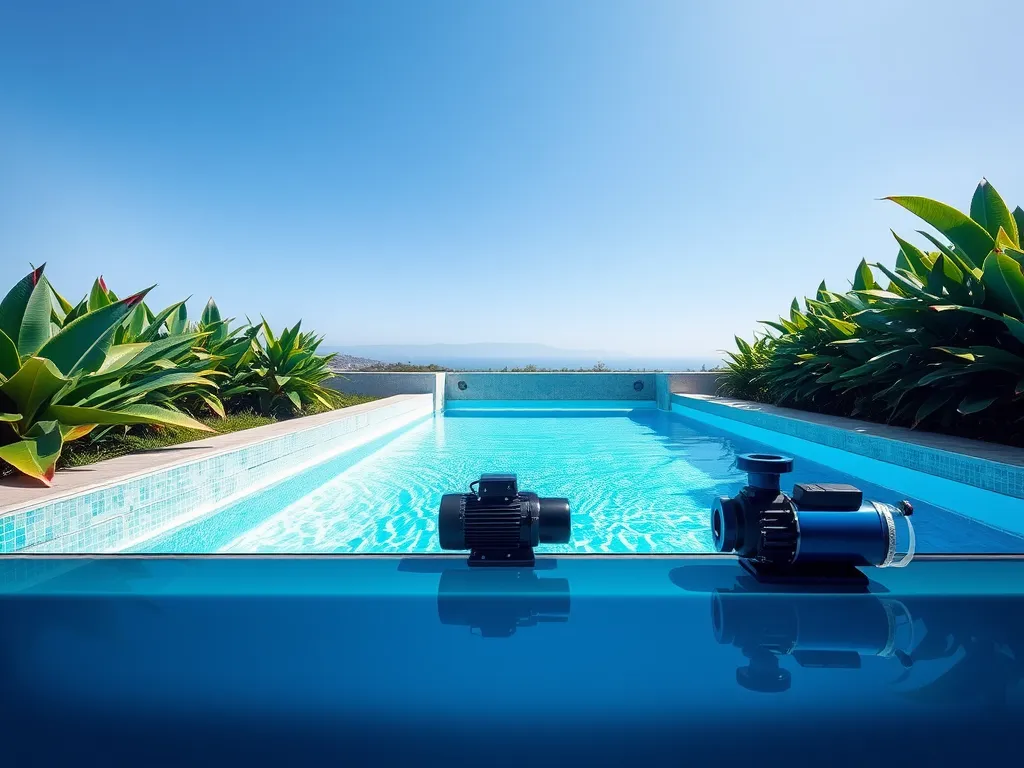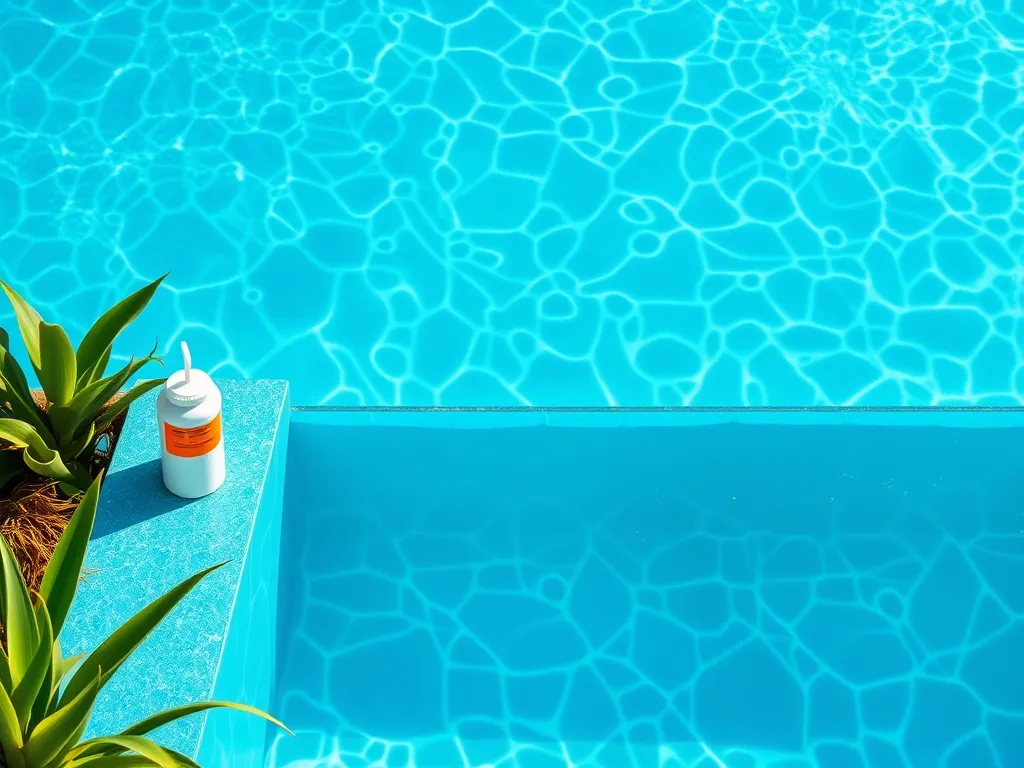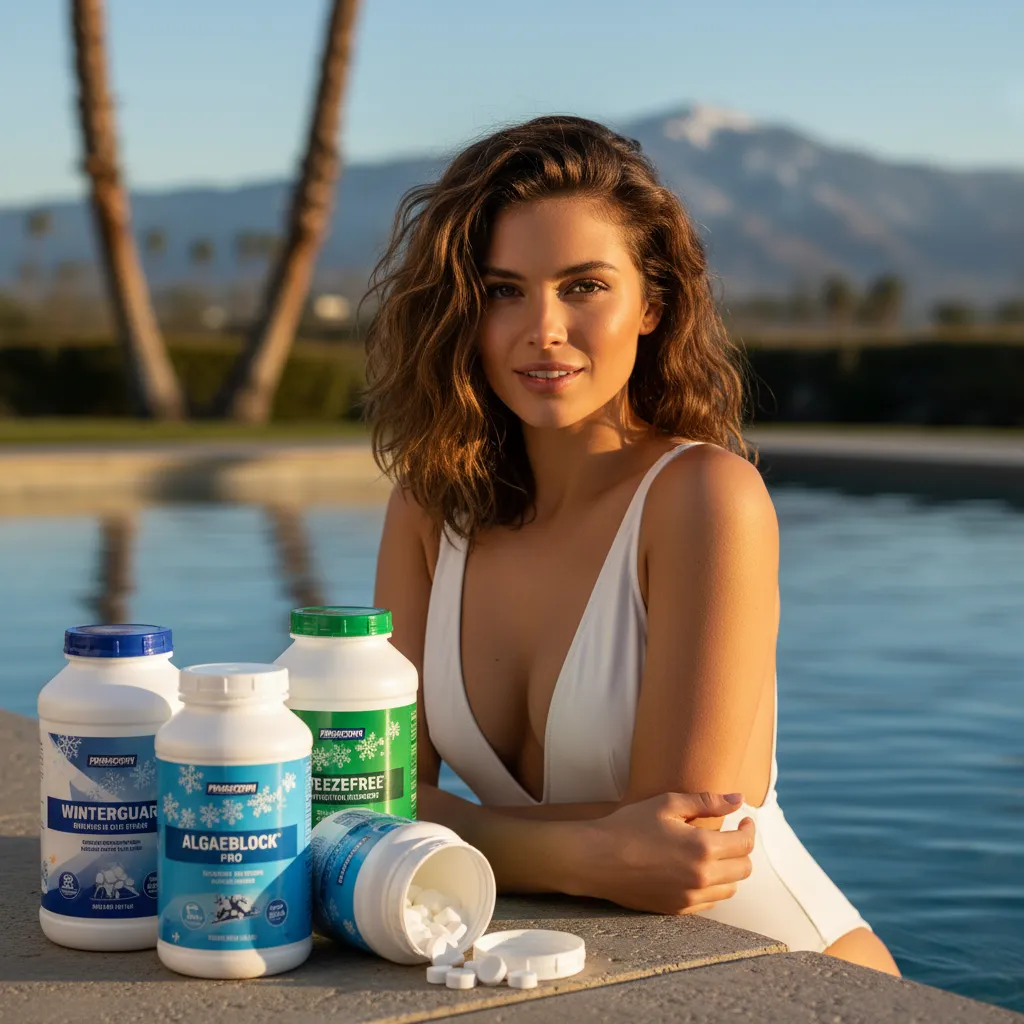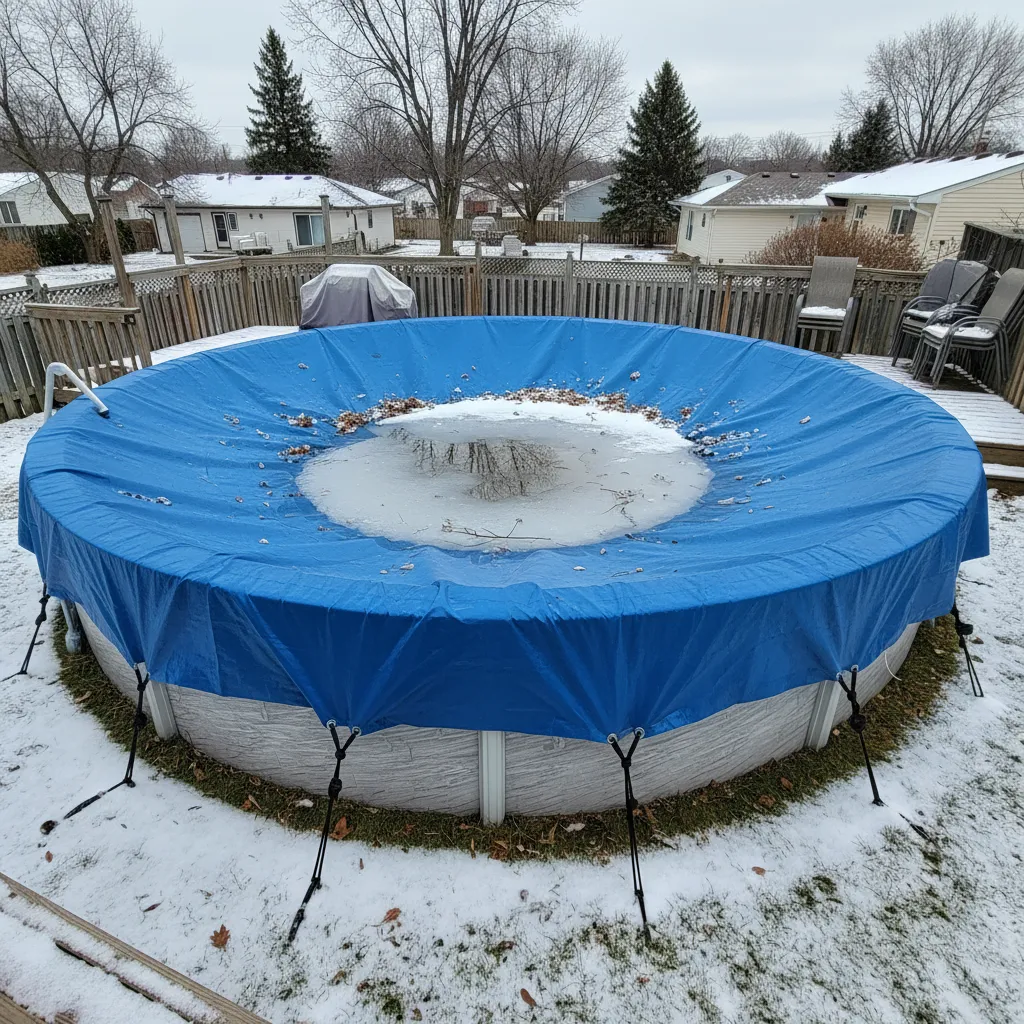Understanding Above Ground Pump Run Time
Published on: April 10, 2025 | Last Updated: April 13, 2025
Written By: Rachael Weatherbottom
An above ground pump’s run time is how long it operates daily to keep your pool clean. Proper run time prevents algae growth and ensures chemical balance. Too little run time leaves water cloudy. Too much wastes energy. Key factors include pool size, pump power, and how often you want all the water filtered (called “turnover”). Let’s explore how to calculate this.
Pump Run Time Calculator
- Find your pool’s total volume in gallons
- Check pump specifications for flow rate (GPM)
- Choose desired daily water turnovers (1-2 typical)
Above Ground Pump Run Time: Key Factors and Best Practices
Optimizing your above ground pump‘s run time ensures clean water, energy efficiency, and equipment longevity. Variables like pool size, pump type, and environmental conditions directly influence daily operation. Let’s break down the critical elements affecting above ground pump runtime. A well-maintained above ground pump can also be used for inground pools. Combining above ground pumps with inground setups offers flexibility and efficiency in water management.
Crucial Winterizing Products
"The all-in-one solution for a guaranteed clear spring opening."
All-in-One Closing Chemical Kit
Winter demand is high - check stock
"The 'set & forget' option. This is the easiest winterizing I've ever done."
Simple 3-in-1 Winterizing Balls
Winter demand is high - check stock
"Invest once to protect your liner and prevent a swamp in the spring."
Heavy-Duty Winter Pool Cover
Winter demand is high - check stock
Pool Size and Water Volume
Larger pools require longer pump cycles to circulate all water. The turnover rate—the time needed to process the entire volume—is a primary metric. For example, a 15,000-gallon pool with a 50 GPM (gallons per minute) pump needs 5 hours to complete one turnover. Most experts recommend 1.5–2 turnovers daily. This translates to 8–12 hours of runtime for average-sized pools. When considering the efficiency of water circulation, it’s important to also think about long fill pools. These pools often require specific setups to handle prolonged filling and circulation effectively.
Pump Horsepower (HP)
Higher horsepower pumps move water faster but consume more energy. A 1.5 HP pump may cycle water 20% quicker than a 1.0 HP model, reducing run time by 2–3 hours. Oversized pumps can cause turbulence in filters, while undersized units strain motors. Match HP to your pool’s volume and plumbing diameter for balanced performance.
Filter Type and Cleanliness
Cartridge, sand, and DE filters have different flow rates. A clogged or dirty filter forces pumps to work harder, extending run times. For instance, a sand filter with 15 PSI pressure might need 10 hours daily, but if pressure rises to 25 PSI due to debris, runtime could increase by 30% to maintain circulation.
Seasonal and Environmental Factors
Warmer climates accelerate algae growth and evaporation, necessitating longer cycles. In summer, a pool in Arizona may require 12–14 hours of runtime, while a Michigan pool might need only 8–10. Winterizing reduces this to 4–6 hours to prevent freezing.
Above Ground Pump Types and Their Runtime Needs
Not all pumps serve the same purpose. Runtime varies significantly between pool, sprinkler, and boat pumps.
Above Ground Pool Pumps
Standard single-speed models typically run 8–12 hours daily. Variable-speed pumps can cut this to 6–8 hours by adjusting flow rates during filtration. For swim spas above ground pump run time, 4–6 hours suffices due to smaller water volume. However, keeping a clean pool may require a different approach. Many pool owners choose to run Pentair pool pumps for 24 hours to maintain optimal water clarity and sanitation.
Above Ground Sprinkler Pumps
These pumps operate intermittently, usually 1–3 hours daily, depending on irrigation zones. A above ground sprinkler pump run time exceeding 4 hours may indicate leaks or zone overlap. Regular use and maintenance can impact their durability. Knowing this can help you keep track of your pool pump’s lifespan.
Above Ground Boat Pumps
Bilge pumps for boats often run continuously during use but should not exceed 48 hours without rest. For dockside applications, limit above ground boat pump run time to 6–8 hours to prevent motor burnout. Knowing the best time to run a pump can help extend its life. The best time for a run pump is typically when the water levels are high and consistent monitoring is essential.
| Pump Type | Average Daily Run Time | Monthly Energy Cost* |
|---|---|---|
| Single-Speed Pool Pump (1.5 HP) | 10–12 hours | $45–$60 |
| Variable-Speed Pool Pump (1.5 HP) | 6–8 hours | $20–$35 |
| Sprinkler Pump (1.0 HP) | 2–3 hours | $10–$15 |
*Based on $0.15/kWh and 30-day cycle.
Also See: Pool Cost Estimator: Get an Accurate Estimate Easily

Adjusting Run Time for Climate and Usage
Environmental factors and pool activity levels demand runtime flexibility. Heavy rainfall, leaf debris, or increased swimmer load can shorten filter efficiency. After a storm, increase runtime by 2–3 hours temporarily to clear contaminants. This flexibility is important because many pool owners choose to run their filters continuously. Running the pool filter 24/7 helps maintain clean water and reduces the need for frequent shock treatments.
Hot Climates Vs. Cooler Regions
In areas with temperatures above 85°F, extend pump operation by 25% to combat algae. Pools in humid climates like Florida benefit from nighttime running to reduce evaporation losses. It is also important to regularly check your pool cover algae for algae growth. Pool cover algae can thrive in damp, warm conditions if not monitored effectively.
Saltwater Vs. Chlorine Pools
Saltwater systems require consistent circulation to maintain chlorine generation. Run above ground water pump run times 10–12 hours daily, even during low-use periods. Proper maintenance is key for any pool system. This is especially true when considering a saltwater pool startup.
Energy Efficiency and Cost Considerations
Pumps account for 20% of a household’s summer energy bill in pool-heavy regions. Upgrading to ENERGY STAR-rated models can save $300+ annually. Pair pumps with timers or smart controllers to automate schedules during off-peak electricity hours. These changes can greatly reduce energy costs. Monitoring the electricity usage of pool pumps is important for maintaining efficiency and saving money.
Calculating Energy Consumption
A 1.5 HP pump uses ~1.8 kW per hour. Running 10 hours daily at $0.15/kWh costs $2.70/day or $81/month. Reducing runtime by 30% saves ~$24 monthly.
Solar-powered Pump Options
Solar pumps operate at lower speeds but can run longer (12–14 hours) without grid reliance. Initial costs range from $1,200–$3,500, with payback periods of 3–5 years in sunny regions. When considering a solar pump, it’s important to think about overall costs. A new pool pump cost can vary widely based on features and type.
FAQs: Common Questions About Above Ground Pump Run Time
How Long Can an Above Ground Pump Run Continuously?
Most residential pumps are designed for 8–12 hour cycles. Continuous operation beyond 24 hours risks motor overheating. For emergency dewatering, use industrial-grade models rated for 72+ hours. For homeowners, knowing how long to run the pool pump is important for maintaining water quality. Keeping a consistent run time helps ensure clear and safe pool water.
What Are Signs Of Excessive Run Time?
- Rapidly climbing energy bills
- Frequent filter clogs
- Unusual motor noise or vibrations
Can I Reduce Run Time After Adding Chemicals?
Yes. After shocking the pool, run the pump for 6–8 hours to distribute chemicals, then revert to normal cycles. For algaecides, maintain extended runtime (12 hours) for 24–48 hours. Taking care of your pool’s water quality is important for keeping it clean. Using algaecide in a saltwater pool helps to prevent algae growth effectively.

Maintenance Tips to Optimize Pump Performance
- Backwash sand filters when pressure rises 8–10 PSI above baseline.
- Clean cartridge filters every 4–6 weeks during peak season.
- Lubricate pump seals annually with silicone grease.
For precise runtime adjustments based on your pool’s specs, explore detailed resources at My Pool Calculator.
Special Cases: Swim Spas, Saltwater, and Solar Setups
Unique systems require tailored approaches. Swim spas, with volumes under 2,000 gallons, thrive with 4–6 hour cycles. Saltwater pools need consistent flow to prevent salt buildup in cells. Solar-heated pools benefit from daytime pumping when panels are active.
Handling High Usage Periods
During pool parties or storms, temporarily increase runtime by 50%. Reset to normal once water clarity returns. Monitor pressure gauges to avoid system strain.
When to Consult a Professional
If your pump consistently fails to maintain pressure or requires abnormally long cycles, seek expert diagnostics. Issues like air leaks, impeller damage, or electrical faults often underlie these symptoms.
Balancing pump runtime isn’t guesswork—it’s science. Adjustments based on data ensure efficiency without sacrificing water quality. For hyper-personalized recommendations, leverage tools at My Pool Calculator to align your system with industry standards.
Additional Resources for You:
- CDC – Healthy Swimming & Pool Safety Guidelines
- Do pool pumps need to run every day if the above ground pool is small? – Quora
- How to Calculate Swimming Pool Pump Run Time | Doheny’s – Pool Supplies Superstore
- Pool Pumps: The Best Time to Run Your Pump | Aaron Pools & Spas
- How Long Should I Run My Above Ground Pool Pump? – Fun-Attic
A pool care geek who’s been testing water chemistry since she was tall enough to reach the skimmer.
Pool Calculators, Pool Volume





